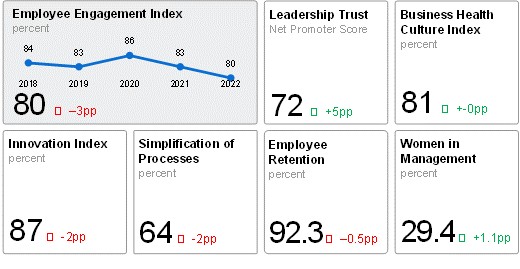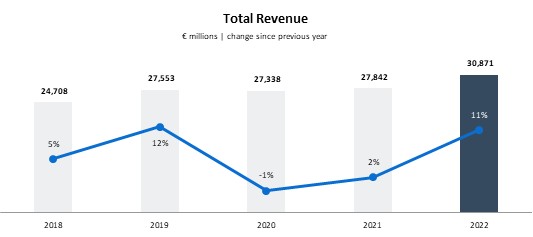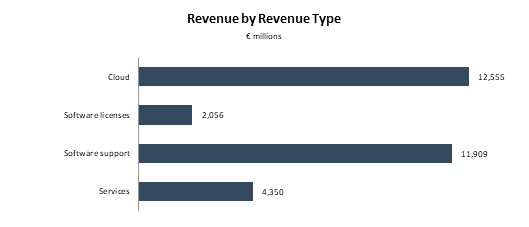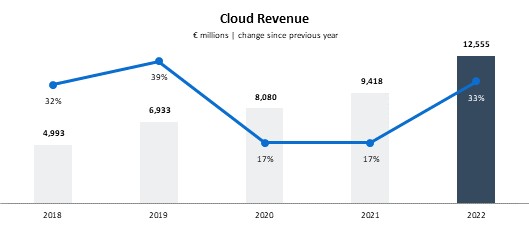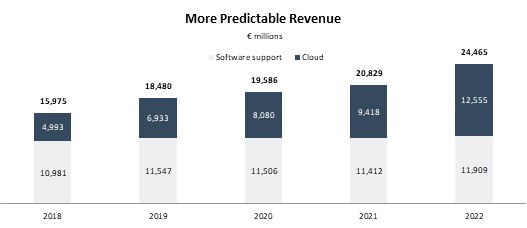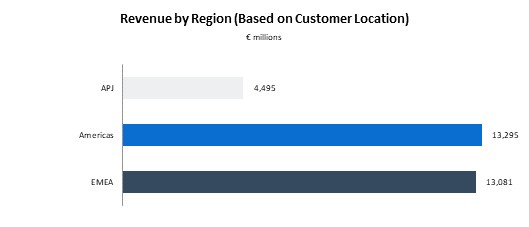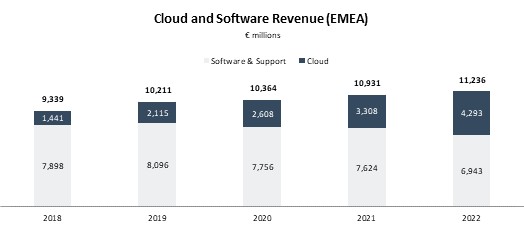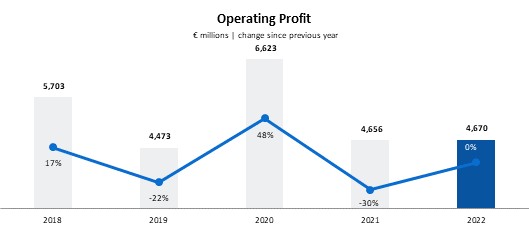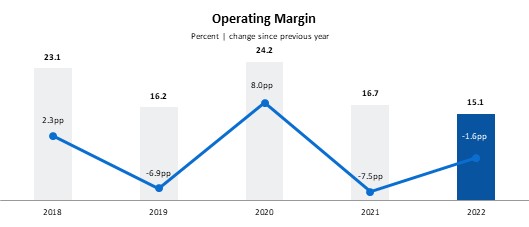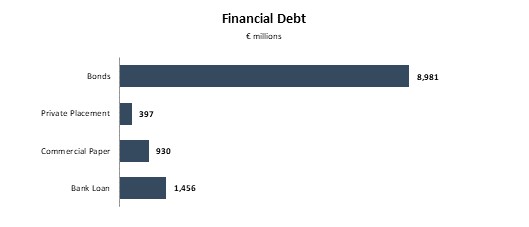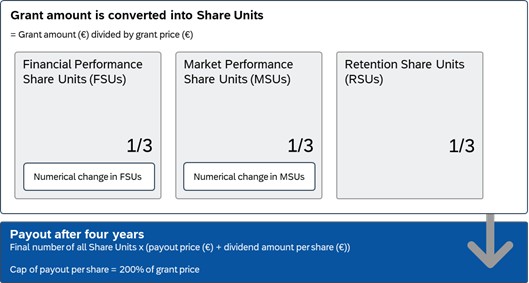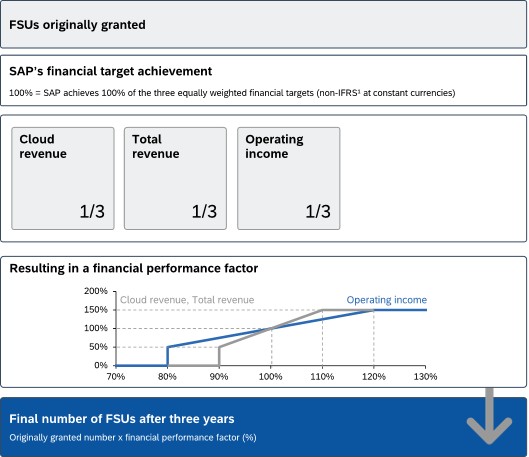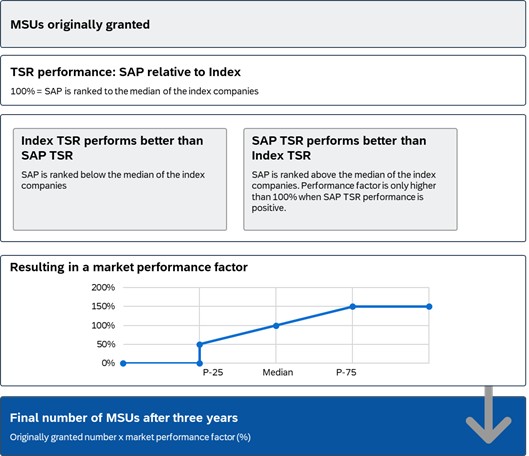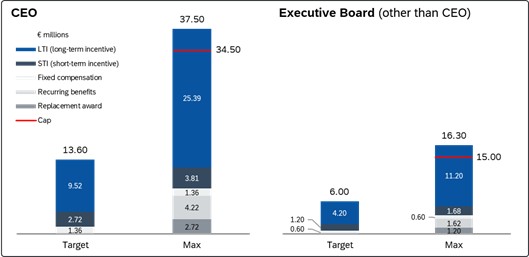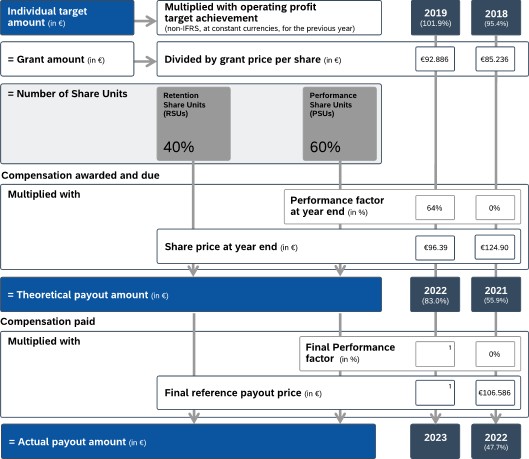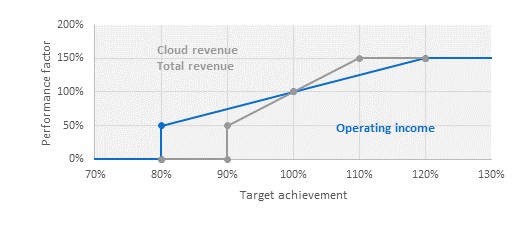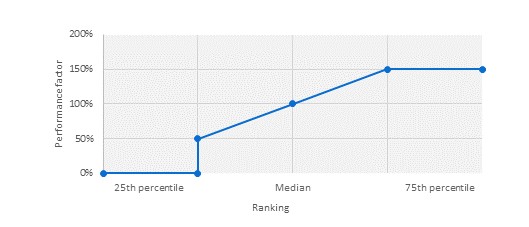SAP's strong commitment to R&D is reflected in our expenditures (see graphic below).
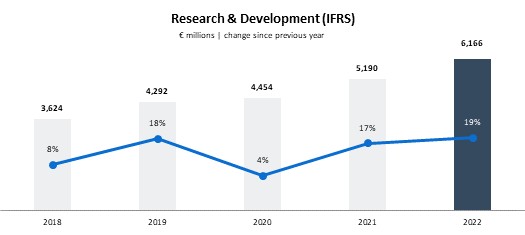
In 2022, our IFRS R&D ratio, reflecting R&D expenses as a portion of total operating expenses, increased 1.1 percentage points (pp) to 23.5% (2021: 22.4)%. Our non-IFRS R&D ratio increased 0.4pp to 24.2% year over year (2021: 23.8)%. At the end of 2022, our total full-time equivalent (FTE) headcount in development was 34,122 (2021: 32,244). Measured in FTEs, our R&D headcount was 30% of total headcount, remaining stable compared to 2021.
Total R&D expense not only includes our own personnel costs but also the external costs of work and services from the providers and cooperation partners we work with to deliver and enhance our products. We also incur external costs for the following:
-Translating, localizing, and testing products
-Obtaining certification for products in different markets
-Patent attorney services and fees
-Consulting related to our product strategy
-Professional development of our R&D workforce
Patents
Our investment in R&D has resulted in numerous patents. As at December 31, 2022, SAP held a total of close to 13,000 (2021: more than 11,000) validated patents worldwide. Of these, more than 800 (2021: 793) were granted and validated in 2022.
While our intellectual property is important to our success, we believe our business as a whole is not dependent on any particular patent or a combination of patents.
Competitive Intangibles
The majority of (intangible) resources that are the basis for our current as well as future success does not appear in the book value of equity in our Consolidated Financial Statements. This is apparent from a comparison of the market capitalization of SAP SE (based on all issued shares), which was €118.4 billion at the end of 2022 (2021: €153.4 billion), with the book value of our equity in the Consolidated Financial Statements, which was €42.8 billion (2021: €41.5 billion). This means that the market capitalization of our equity is more than two times higher than the book value. The difference is mainly due to certain internally generated intangible resources that the applicable accounting standards do not allow to be recorded (at all or at fair value) in the Consolidated Financial Statements. These resources include customer capital (our customer base and customer relations); employees and their knowledge and skills; our ecosystem of partners; the majority of internally developed software; our ability to innovate; the brands we have built up, in particular, the SAP brand itself; and our organization.
According to the Interbrand "Best Global Brands" annual survey, SAP ranked as the 20th most valued brand in the world (2021: 20th). Against other German brands, the SAP brand ranks third behind Mercedes-Benz and BMW, and third globally against other brands in the business services sector. Interbrand determined our brand value to be US$31 billion, an increase of 3% compared to the previous year (2021: US$30 billion). Kantar BrandZ recognized SAP as the world's 31st most valuable brand in its 2022 Most Valuable Global Brands ranking (2021: 26th). The ranking estimates SAP's brand value at US$69 billion, unchanged compared to the previous year.
27
